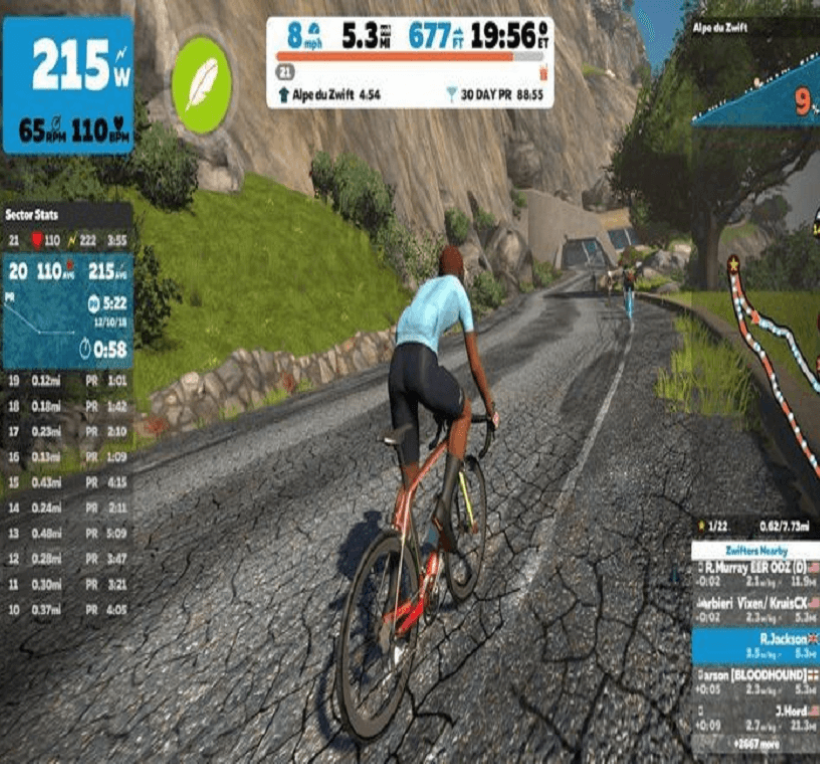

Football Performance Technology: 3 Key Areas of Impact
Read Time: 5 min.
Moneyball returns, bigger better than ever
From the cinematic underdog story of ‘Moneyball’ to the game-changing reality on today’s fields, courts, and tracks, the marriage of sports and technology is reshaping the competitive landscape. This isn’t Hollywood fiction; it’s the playbook for modern champions.
The Vision – Where Will My Club Be In The Next Few Years?
Unlike managers and coaches who often focus on short-term goals due to their tenure limitations, Football Directors must have a long-term vision. Making data-driven decisions ensures stability and continuity, aligning player and manager choices with the club’s long-term vision, and playing style. As Deloitte notes, viewing technology as a long-term investment opportunity is crucial and needs to be embedded in every aspect of the business, transforming people, processes and technology. From this, a cycle of success can be established, where improved sporting achievements lead to increased revenues for Football Directors laying the groundwork for future on-field success. Enhanced successful performances attract lucrative sponsorships, boost broadcasting and prize money, and make clubs more appealing to top talents worldwide. This, in turn, leads to more success on the field, creating a positive feedback loop that enhances fan experiences, increases global exposure, and generates more revenues from merchandise and match days. Clubs that pioneer the integration of performance technology have a significant advantage in creating a sustainable future and longevity. The groundwork laid today will become increasingly difficult for competitors to replicate over time and as such, teams must be proactive, seizing opportunities to climb the ranks and cement their positions in the leagues
The Strategy Problem – Introducing New Technology in my Club
Innovating effectively in the sports industry goes beyond just revenue generation; it involves strategically incorporating new technologies and seamlessly integrating them with traditional sports experiences. This requires a deep understanding of fan behavior, preferences, and engagement patterns across various platforms. Leveraging technology for cost savings is not just about adopting the latest tools but also about optimizing processes and workflows to maximize efficiency and resource utilization. Effective innovation entails creating immersive and personalized interactions that resonate with fans before, during, and after games, fostering long-term loyalty and advocacy. However, achieving these goals can mean significant investment in technology infrastructure, talent with expertise in emerging technologies, and a culture of innovation and experimentation within sports organizations, much easier said than done for most. Overcoming the fear of risk and addressing the perception of complicated processes are essential steps in encouraging a forward-thinking approach to innovation, where calculated risks are taken based on data-driven insights and market trends. The cost of inaction, both in terms of missed opportunities and falling behind competitors, highlights the urgency for sports properties to prioritize innovation for long-term relevance, fan engagement, and overall survival in an ever-evolving sports landscape.
Let’s delve into the main key areas where performance technologies are currently providing substantial value:
1. Player Scouting: Traditional scouting methods have evolved with the advent of advanced tracking data technologies, offering even more comprehensive player evaluations beyond mere event statistics. A very prominent example is Liverpool’s recruitment of Mohamed Salah, which was heavily influenced by data analysis. Metrics showed his explosive pace and off-the-ball movement, suggesting he’d thrive in their high-pressing system. While his scoring record wasn’t top-tier at the time, data indicated his potential to excel in the right environment. And they couldn’t be more accurate, years later, the £36.9 million acquisition from AS Roma proved profitable for the club.
2. Coaching, Strategy & Training: AI-driven tracking data provides invaluable real-time insights into not just player positions but also their movements, decision-making, and tactical contributions during matches and training sessions. This comprehensive data allows scouts and coaches to make more informed assessments regarding a player’s suitability for specific roles within the team. This data-driven approach helps optimize individual workloads, tailor fitness programs, and mitigate the risk of injuries, ensuring players perform at their peak while minimizing long-term physical strain. Beyond assessing technical skills, this data aids in evaluating a player’s physical attributes, work rate, and endurance, offering a holistic view of their fitness for various playing styles and strategies. Wearable and non-wearable devices offer detailed analytics that we would otherwise never be able to observe with the naked eye. A specific application of this is with player development, in which match footage is overlaid with player tracking data, allowing coaches to analyze not only player movement but also passing patterns, team formations, and defensive positioning in detail. Performance technologies are taking Football training to new heights by integrating cognitive development alongside tactical exercises. Wearable tech and biofeedback data help coaches tailor drills that enhance focus, decision-making, and reaction times under pressure. These combined benefits translate to players who can read the game better, anticipate situations, make quicker and more accurate choices, and ultimately perform at their peak on the field. This helps identify effective game strategies, enabling personalized training programs to keep players at peak performance as humanly possible.
3. Player Skills & Injury Prevention: Signing talented players is one thing for a club but being able to effectively utilize this and embed the player in the current team flow is another ball game. Reference here can be made with Manchester City’s very own Kevin De Bruyne. Advanced software and psycho analysis analyzed player data (passing accuracy, dribble success rate, etc.) alongside opponent data and determined an exceptional fit with the team. This allowed Pep Guardiola to firstly identify individual and team strengths, as well as the weaknesses. Performance technologies analyze a player’s running technique, jump mechanics, and landing patterns in minute detail. This allows trainers to identify even subtle discrepancies from optimal movement patterns that can increase the risk of injuries like ACL tears. For example, if the software reveals a player like Manchester United’s Marcus Rashford lands heavily on his heels after jumping, coaches can use the data to design drills specifically focused on improving his landing mechanics. These drills might involve exercises with a focus on soft landings, strengthening the muscles around the ankles and knees, and retraining Rashford to absorb impact more effectively through his entire leg.
Conclusion
For Football Directors looking to elevate their clubs to new heights, embracing technology is not just an option – it’s a necessity! The path to success in modern Football requires staying ahead of the curve. At HYPE, we understand these challenges and are committed to partnering with you, providing tailored solutions that keep your club at the forefront of Football’s technological revolution.
Co-written by: Emri Dolev, Gomezyani J Gondwe
We are helping over 100 Sports Properties to increase revenue and reduce costs through innovation – Feel free to ask me how




Comments